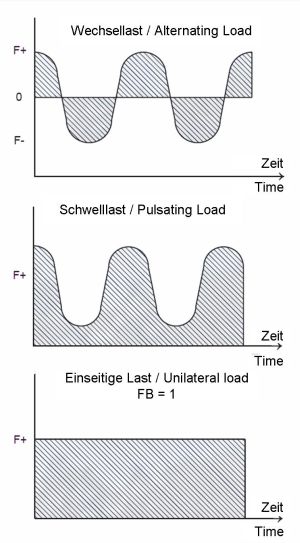Load ratings
Load ratings are derived from the material characteristics of the used bearing or rod end. They are not standardised and can be different depending on the manufacturer. Therefore, it is recommended to compare the load ratings.
Static load rating
The static load rating defines the maximal allowed load which
- radial spherical plain bearings in radial direction or rod ends in the direction of the piston (pull and push)
- angular contact spherical plain bearings and sliding bushings in radial direction
- axial spherical plain bearings in axial direction
are able to withstand in standstill or slow movements (i.e. thermal expansion) without risking permanent damage that reduces the lifetime or causes deformation. The static load rating of rod ends contains a security of 1,2 against the material yield strength of the used material depending on the rod end type. In case rod ends are loaded with repeated load cycles or alternating loads the maximal allowed load is calculated according to the equation:
Fperm = Stat. load x FB.
Dynamic load rating
The dynamic load rating is the maximal allowed dynamic load which
- radial spherical plain bearings in radial direction or rod ends in the direction of the piston (pull and push)
- angular contact spherical plain bearings and sliding bushings in radial direction
- axial spherical plain bearings in axial direction
are able to withstand during tilting, swivelling or circular motion.
Please note that the sizes of all components surrounding the bearing are designed to avoid deformations and consequently a damage of the bearing.
Fperm= Stat. load x FB

